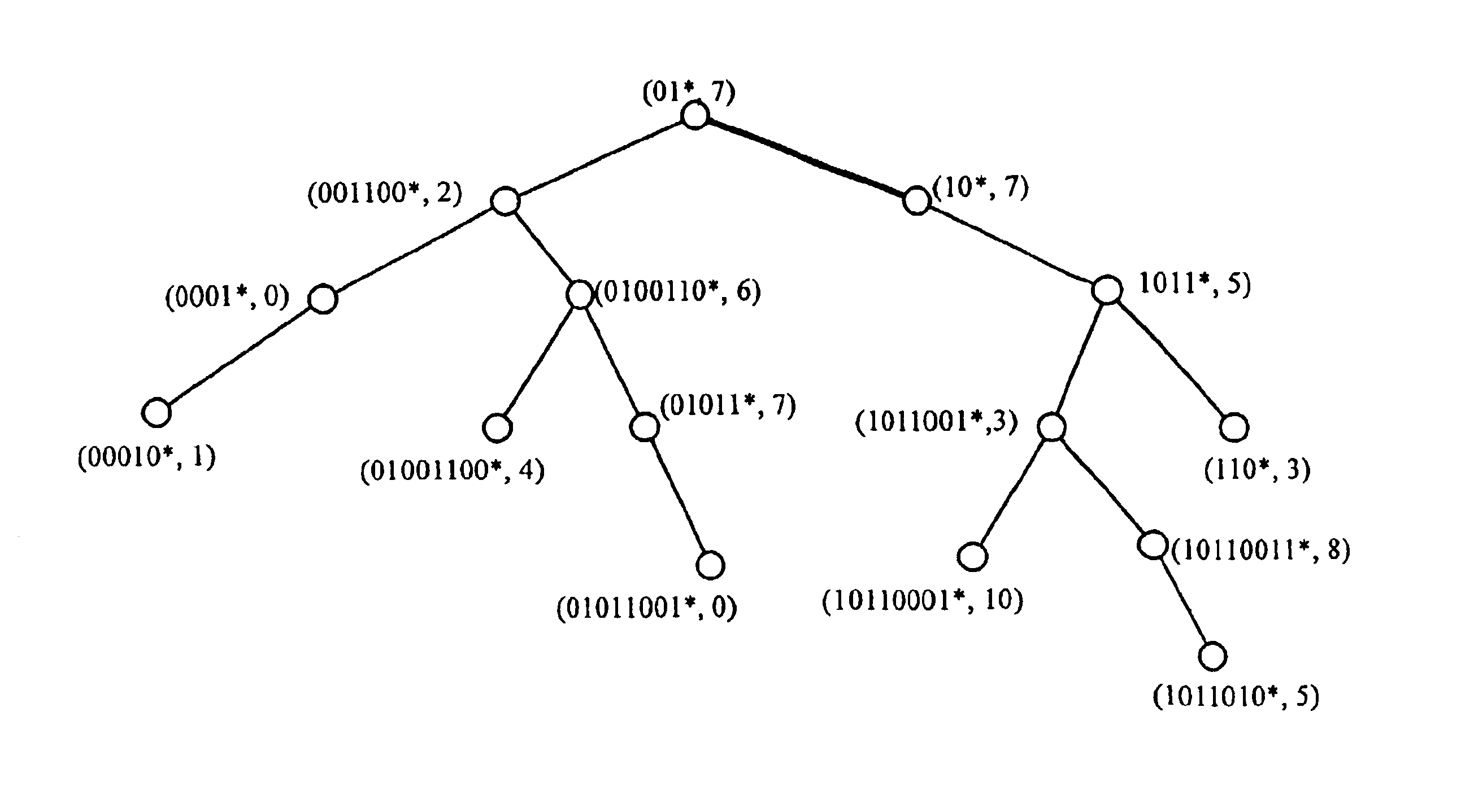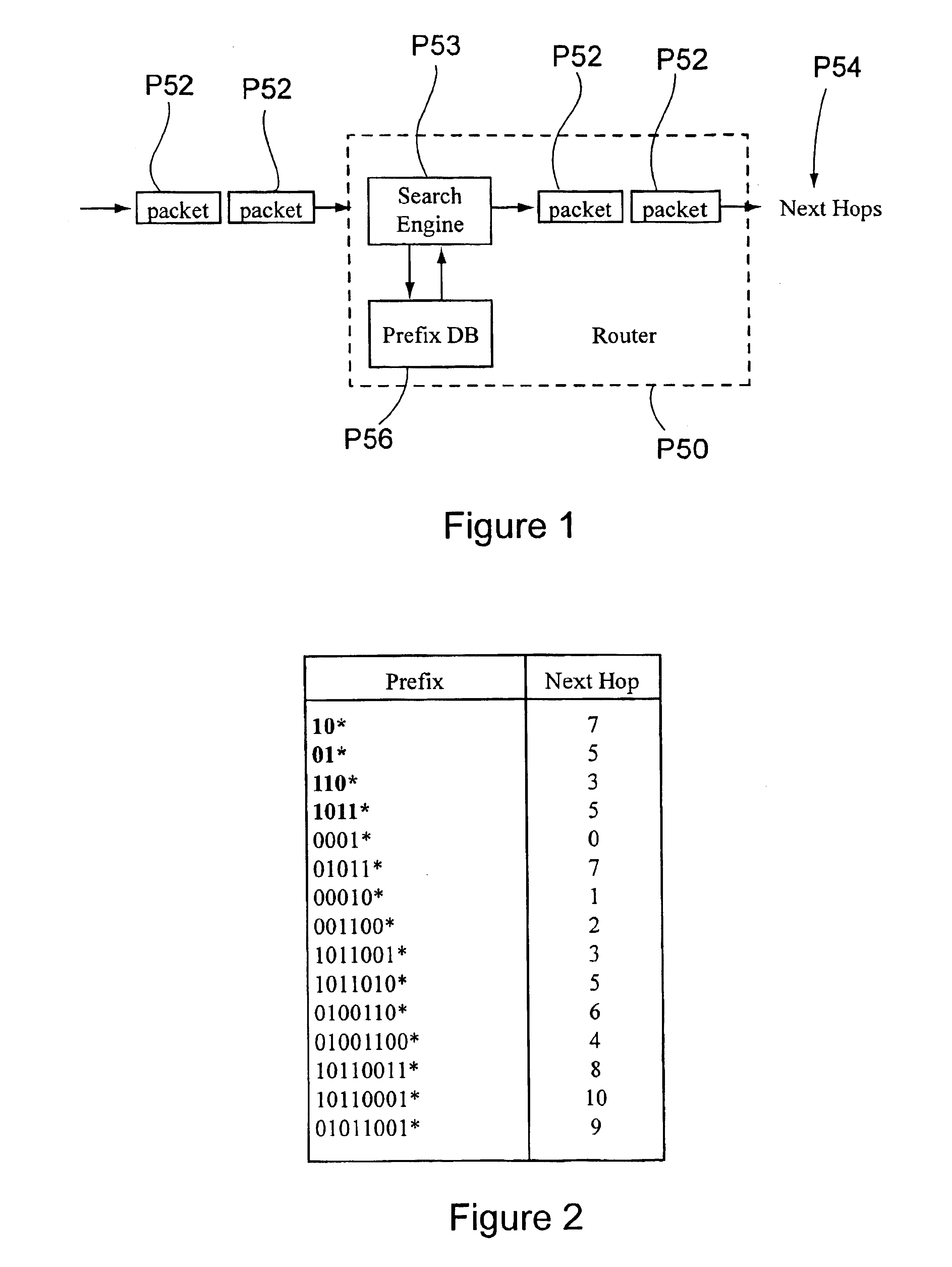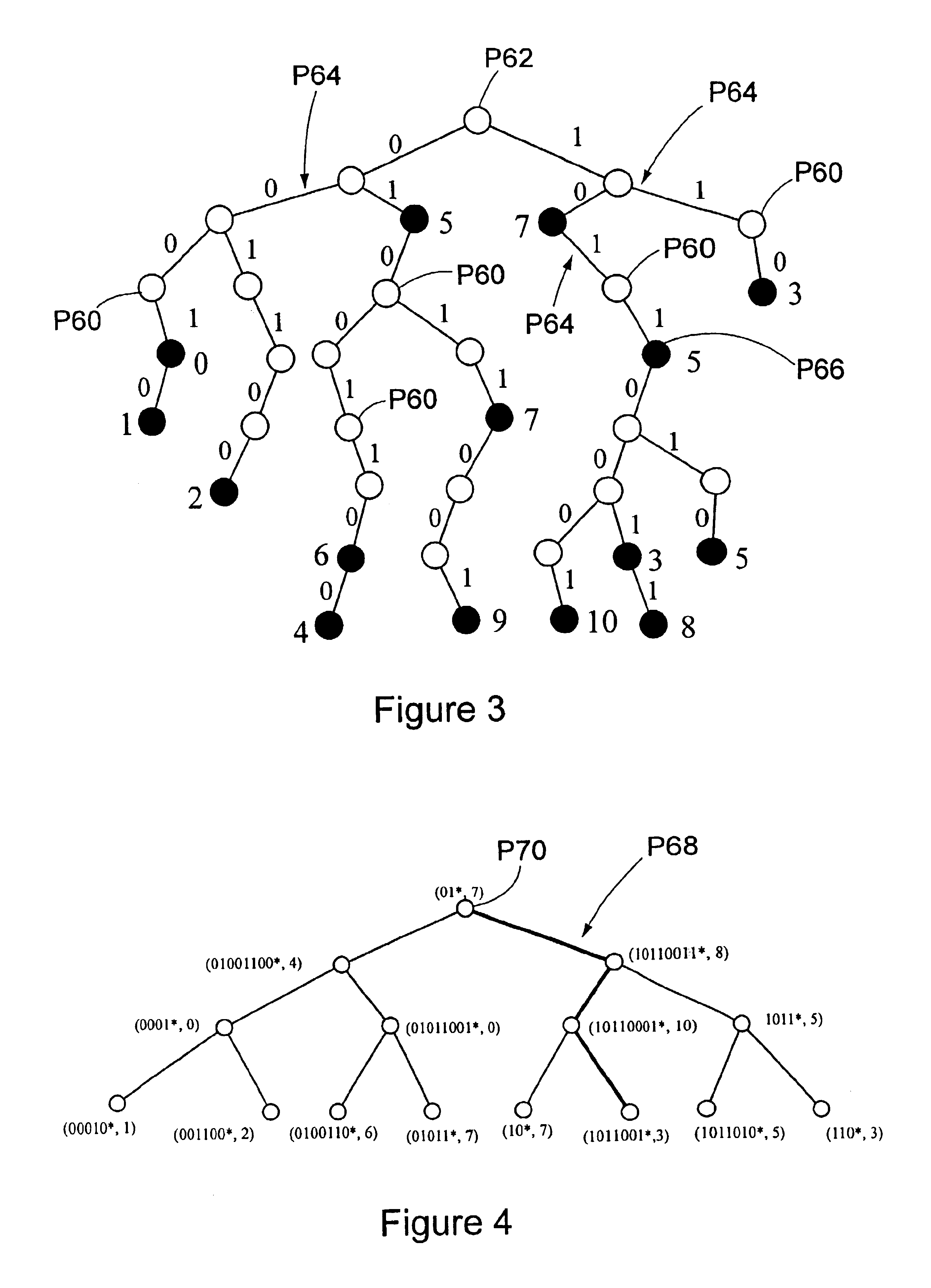Method and apparatus for building and using multi-dimensional index trees for multi-dimensional data objects
- Summary
- Abstract
- Description
- Claims
- Application Information
AI Technical Summary
Benefits of technology
Problems solved by technology
Method used
Image
Examples
first embodiment
1. First Embodiment of the Present Invention: “Dividing by Three”
Based on the general framework discussed above, any multidimensional index method can be considered as indexing a set of data objects according to a plurality of dimensions instead of one. This is an old problem in the database community. One of the first solutions proposed by the community was to build different indexes based on each dimension or key. This solution is extremely costly besides having inconsistency in updates. Some multidimensional access methods such as R-trees, K-D-tree and K-D-B-trees have been proposed. These data structures essentially divide the data space into bounding boxes. The main problems with these methods are high dimensionality and high cut cost as explained previously. The first question in designing was why not index data objects based on only one dimension? Conventional wisdom discourages indexing data objects on a single dimension because when indexing data objects on a single dimensi...
example 1
FIG. 30 shows a table of a set of rules for classifying and filtering IP packets in routers and firewalls. The indexing dimensions 200, 202, 204, 206, and 208 are destination and source addresses, destination and source ports, and protocol respectively. Each rule in the table has a key for each dimension. For example, keys 210, 212, 214, 216, 218, 220, 222, 224, 226, 228, and 230 are the keys in each packet associated with dimension 200 (Destination Address). All of this information is carried in each IP packet and is extracted by an IP packet parser before forwarding the packet. The Comment field 232 specifies what the system must do to a packet matching the corresponding row. We are dealing with three types of matching in this example. The source and destination fields are specified as prefixes and matched against the packet source or destination addresses. The protocol field determines the packet initiating protocol. This is usually matched against exact values such as TCP or UDP...
second embodiment
the present invention's solution to these problems is to combine the equal and left subtrees for each split value. Even though it seems like traditional tree structure, this embodiment maintains the basic philosophy of the first embodiment. We previously explained how regular index structures like the B-tree do not have any problem indexing the data set based on one key as long as not too many data objects map to one point such that they cannot be identifiably separated by that key. In the first embodiment all data objects mapping to one point are placed into the equal subtree. When the subtree pointed to by an equal branch overflows, we know all data objects in the subtree have the same key for that split dimension. Then, we have to change the split dimension in order to split the subtree. Therefore, what is really needed is a way to automatically understand that the data objects share the same key for the split dimension of interest and that there needs to be a switch to the next ...
PUM
 Login to View More
Login to View More Abstract
Description
Claims
Application Information
 Login to View More
Login to View More - R&D
- Intellectual Property
- Life Sciences
- Materials
- Tech Scout
- Unparalleled Data Quality
- Higher Quality Content
- 60% Fewer Hallucinations
Browse by: Latest US Patents, China's latest patents, Technical Efficacy Thesaurus, Application Domain, Technology Topic, Popular Technical Reports.
© 2025 PatSnap. All rights reserved.Legal|Privacy policy|Modern Slavery Act Transparency Statement|Sitemap|About US| Contact US: help@patsnap.com



